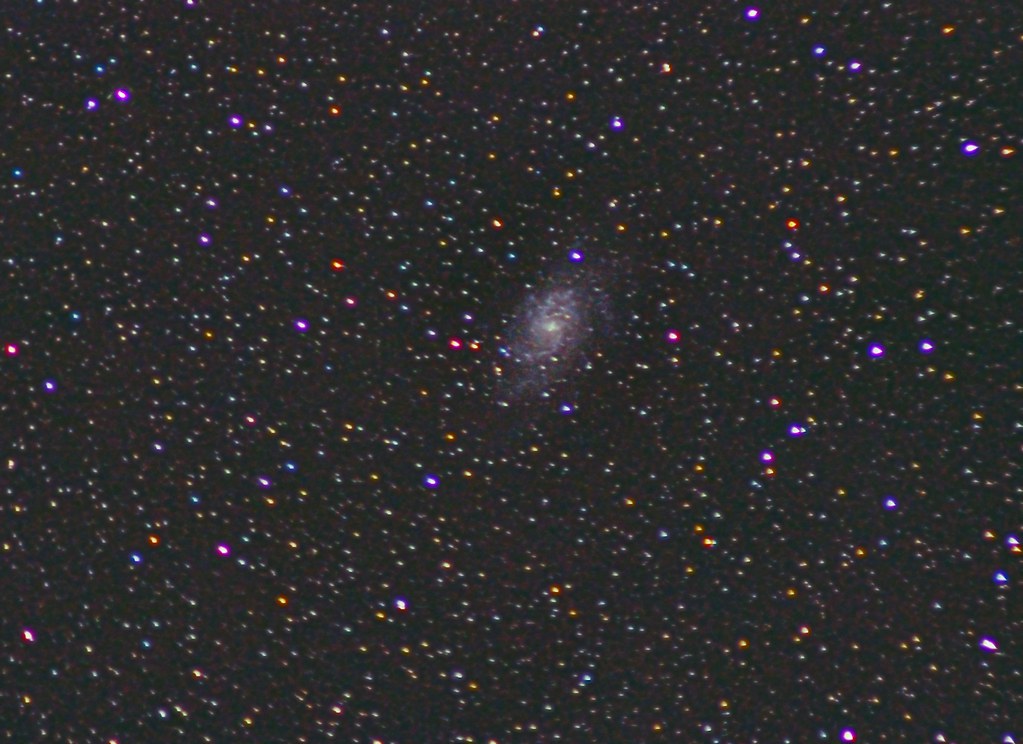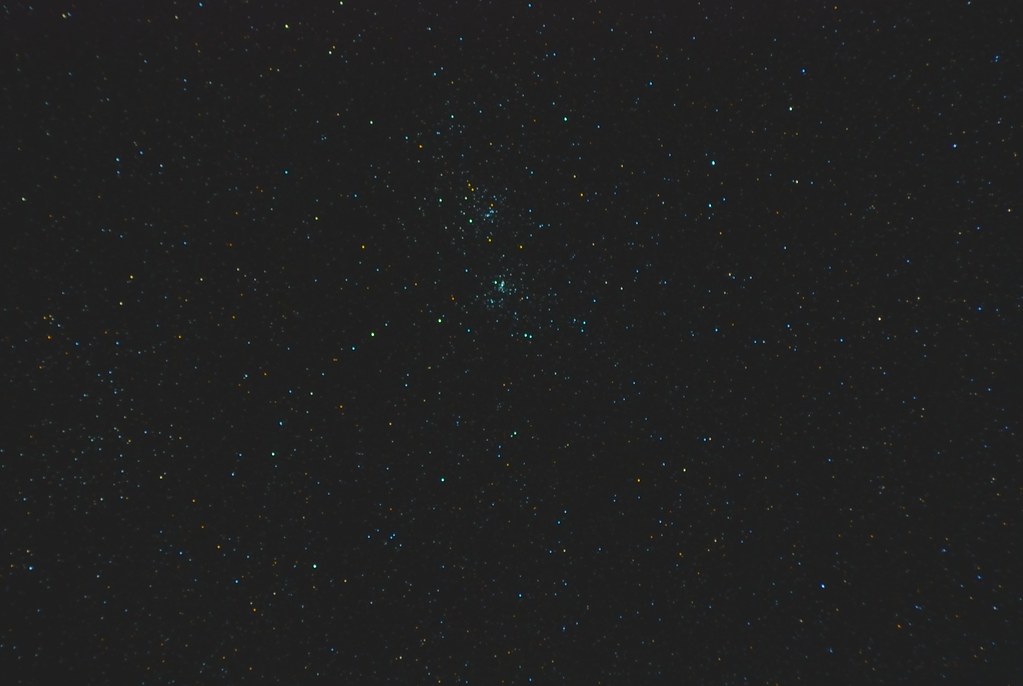Exposing for 3 seconds is very short if we’re talking astrophotography. We are used to exposures of at least a couple of minutes, so what could we possible image with 3 seconds exposures? Well, actually quite a lot!
Why use 3 second exposures?
Shooting at 200mm with my Nikkor 80-200mm F2.8 lens, the longest exposure you can use when using a static tripod is 3 seconds before the stars will turn to elongated and start to become trails. So this is something everyone can do that owns a DSLR for daytime usage with standard gear.
I decided to do some experimentation and see what we can capture when using 3 second exposures, but a lot of them. Processing was a lot of work, since I couldn’t get PixInsight to recognize and register the frames so I couldn’t stack ‘automatically’. Instead I used Nebulosity to register the images by hand by picking the same 2 stars in every frame. And I used over 150 frames per image, so that was quite some clicking to do……
I must say I was quite happily surprised by the results!
All images are taken with the unmodified Nikon D7000 and the Nikkor 80-200mm F2.8 at 200mm F2.8, ISO1600

Andromeda, 153 x 3sec. ISO1600

M33, 198 x 3sec. This one is a crop from the original image

The Pleiades, 153 x 3sec.

Double Cluster, 87 x 3sec.

M42 Orion Nebula, 33 x 3sec.

It never fails to amaze me just how many colors there are in the night sky that we simply can’t see with our meager human eyes.
What a beautiful shot… it’s amazing how beautiful the night sky looks when all those pesky clouds and smog and light pollution get out of the way 🙂